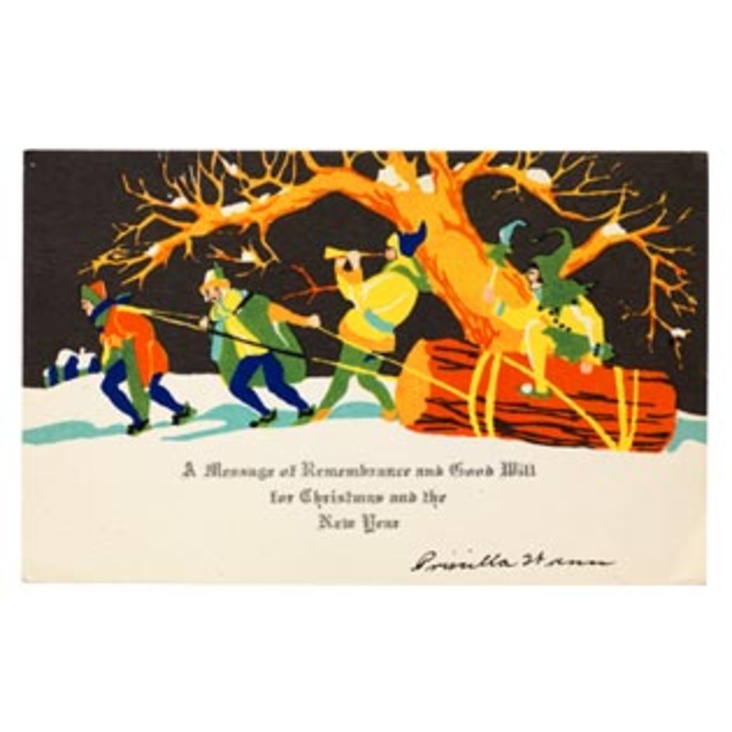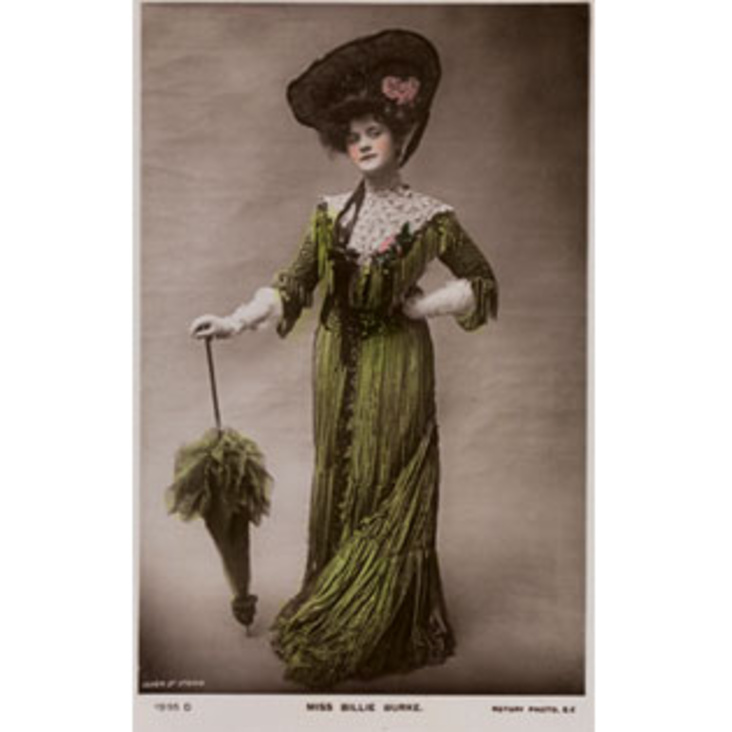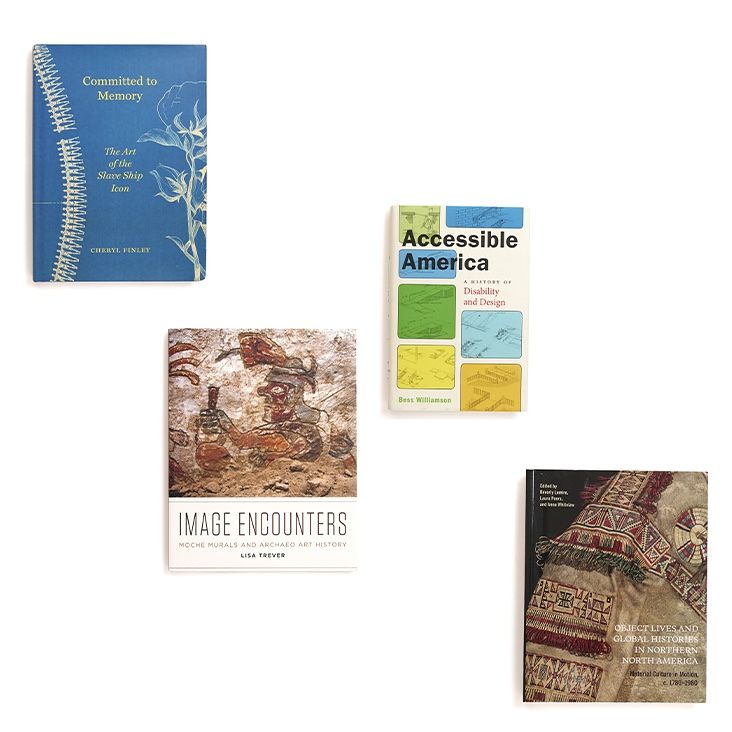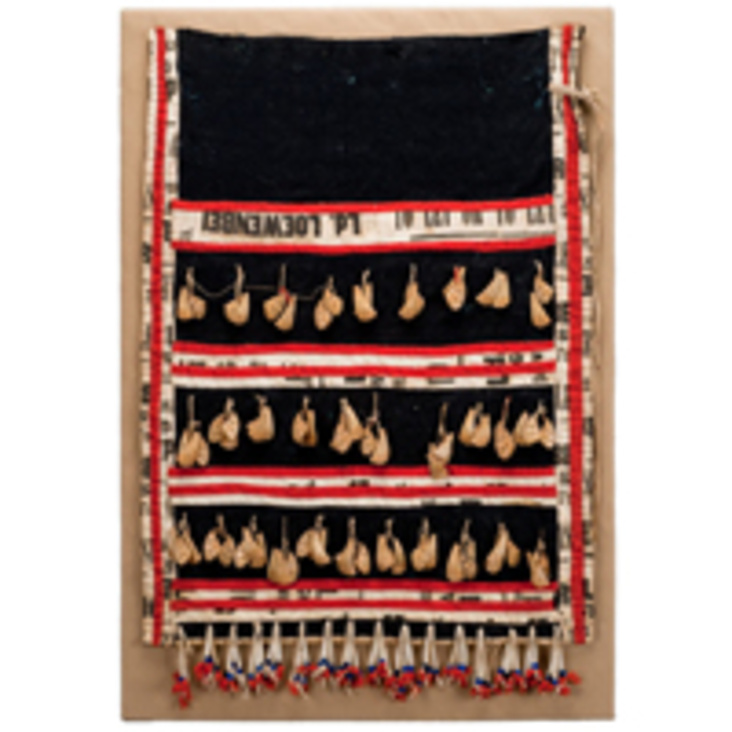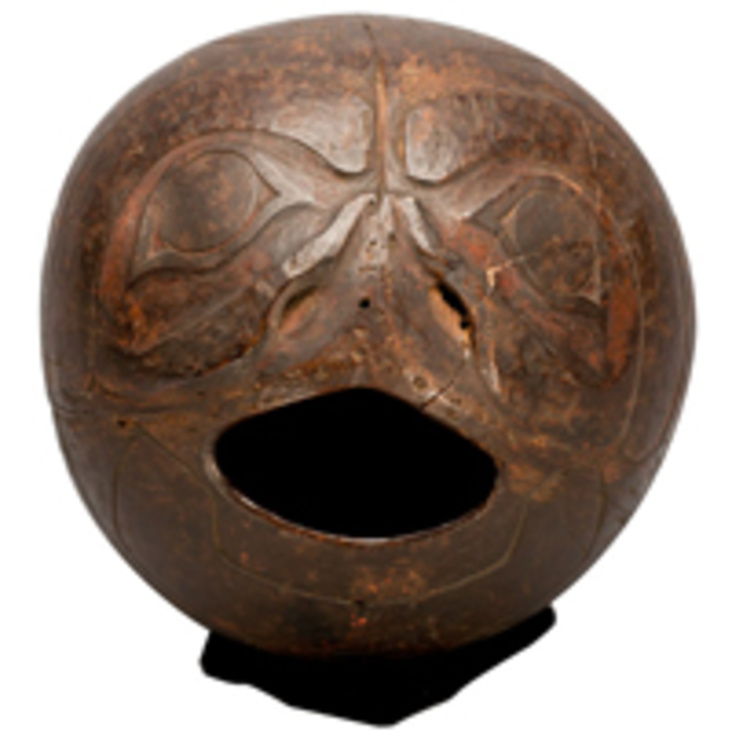
Unknown maker, Tlingit
Fulled wool, wool twill, cotton, glass beads, wool yarn, thread
Donated by Michael Lerner in 1969
American Museum of Natural History 50.2/6650
Beaded pouches, known as “octopus bags” (naakw gwéil) due to their eight tabs, have been important objects among the Tlingit since the late nineteenth century. They incorporate trade materials, such as glass seed beads and cotton or wool cloth, and are based upon a style that originated among the Red River Métis people in Manitoba; in fact, this bag was originally misidentified as a “woodlands” object. Tlingit octopus bags were not used as pouches but rather as regalia in Native ritual. While some beadwork displayed familiar crest imagery, most bags maintained more abstracted foliate or floral designs that would not have been recognized by non-Natives as ceremonial. This repurposing of bags as regalia may also have been based upon a visual analogy between their distinct form and the processional banners of the Russian Orthodox Church. Tlingit nobility displayed the bags to compete for status during this time of upheaval, showing their penchant for adapting foreign expressions of wealth and power as at.óow or “chiefly treasure.”

Click here for a discussion about this object (Marianne Nicolson)


